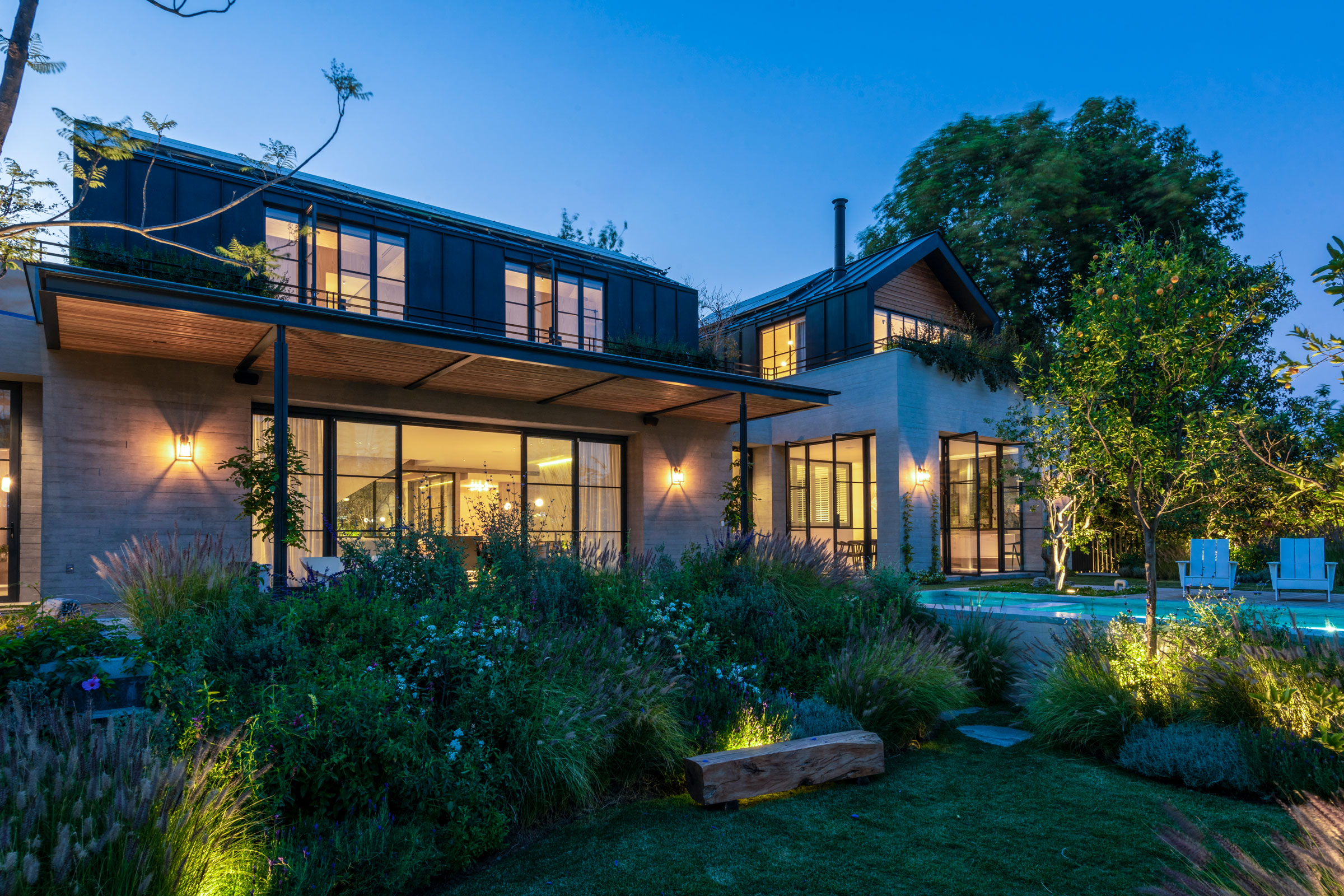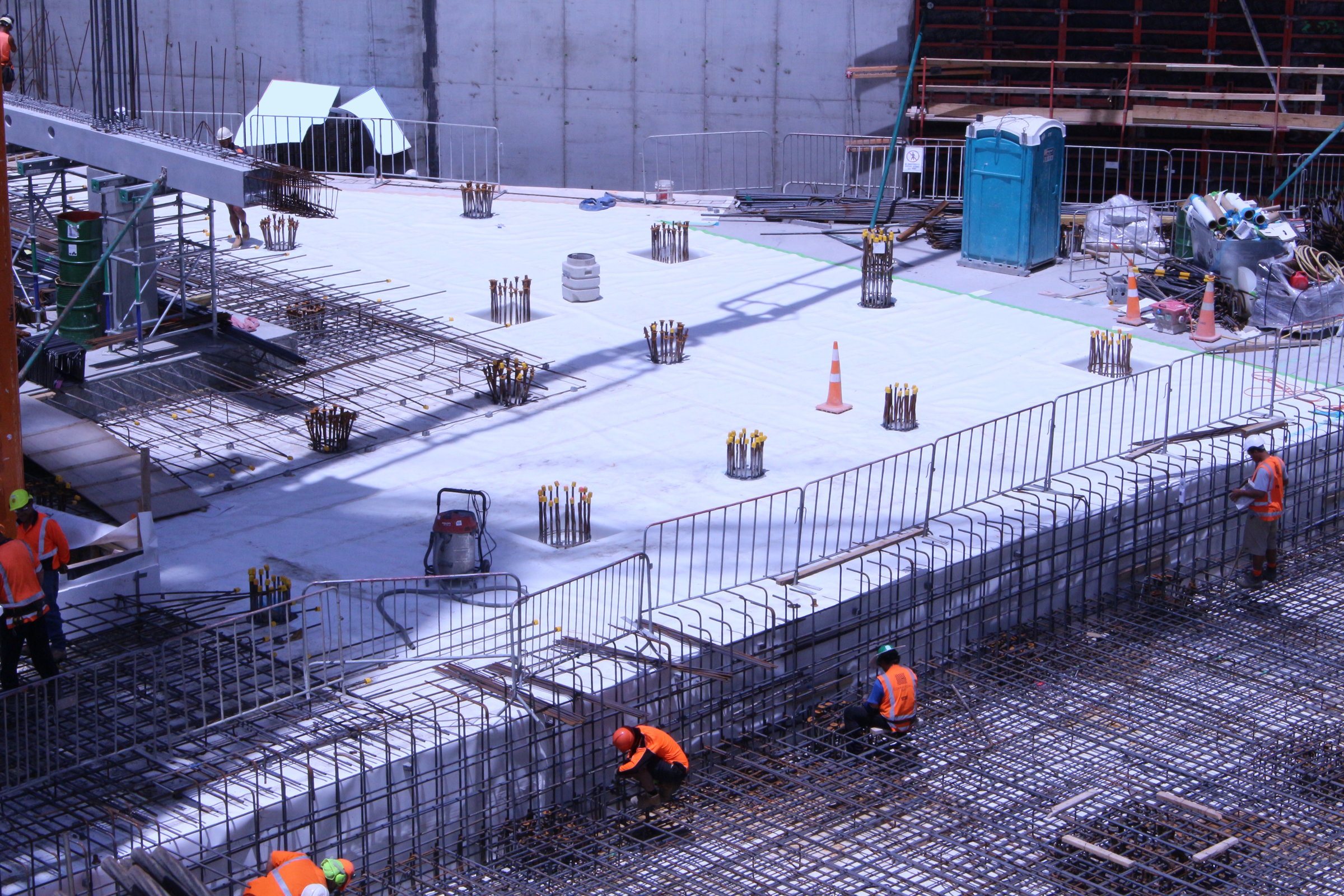Story at a glance:
- In Western Mexico City, Punta House blurs the comforts of urban living with nature.
- Architecture firms ZDA and VGZ Arquitectura designed the house to be self-sufficient.
- Volcanic stone and wood are among the exterior materials, while the design team also emphasized natural light and ventilation.
Punta House offers a smooth transition between the comfort offered by urban housing and the tranquility of the forest. This work is not only inspired by nature but redefines its relationship with it. The house is divided into three levels that go from the private—in the upper part—to the public—in the lower part. The open and luminous landscapes are transformed to be close to the flora and fauna of the place.
In each space you’ll find entrances full of natural light that dialogue with the materials through their textures: zinc, volcanic stone, wood, and concrete characterize the main structure, while lacquers, marble, and stucco define the interior.
In keeping with the regenerative nature of the place, sustainable technology is implemented in the house without sacrificing on comfort. Solar energy provides 100% of electricity consumption, and rainwater harvesting ensures six months of autonomy for the house.
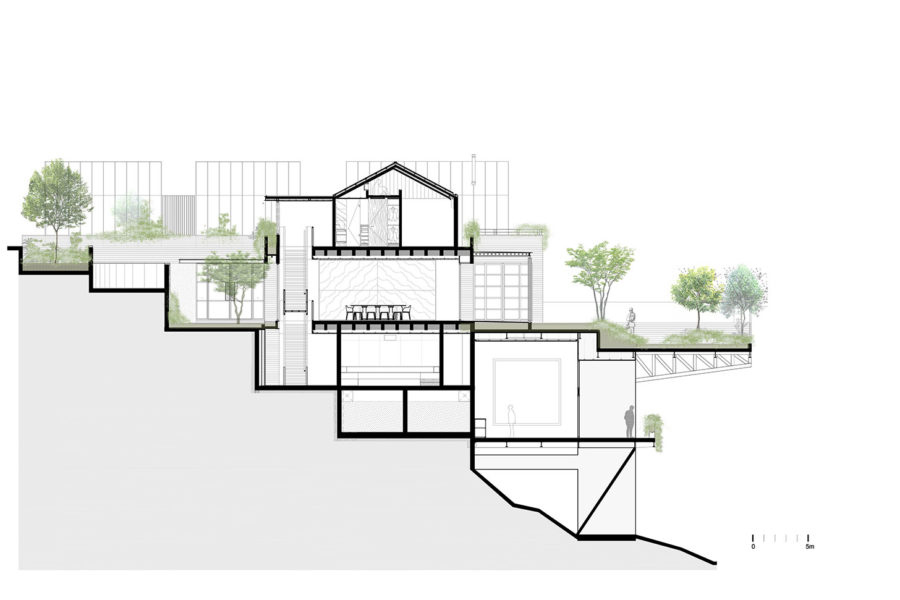
Cross section of Punta House. Drawing courtesy of ZDA
Punta House is a family residence located west of Mexico City, in a fully urbanized neighborhood. Its layout on the site was influenced by two factors—the natural slope of 30%, and its eastern view facing the ravine, a protected and regulated natural area. The project blurs the lines that divide the house from the garden and the garden from the forest.
The design team emphasized entrances full of natural light and ventilation in each area of the house. At all times it was essential that, when intervening with the natural area, the spirit of the site was maintained through a respectful study of the orientations, sunlight, winds, topography, flora, and fauna.
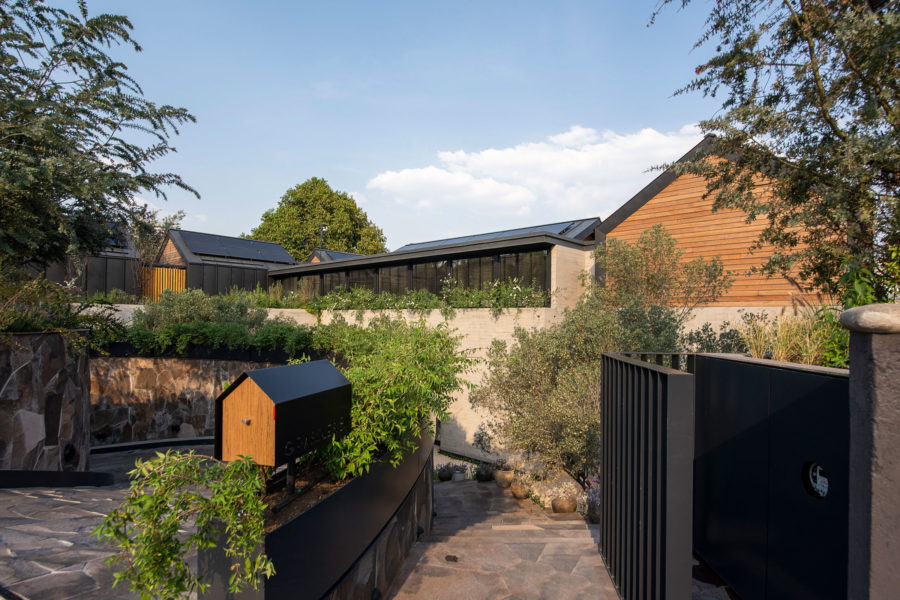
Photo by Jaime Navarro
Different levels of privacy and function were made clear throughout the project thanks to their materiality and distribution in different levels. Two strategies were implemented to reinforce the guiding concept. First, the fragmentation of the built mass in different shapes and levels distribute the activities, and second, this mass of volumes was immersed in the landscape, as if nestled within. The result is that the materiality distinguishes public and private areas by having a different palette for each grade of privacy: steel and zinc for the private areas, and concrete and stone for the common areas, each level distinguished by its materiality and exterior structuring.
The architectural program consists of a parking lot for six cars, service areas, the kitchen, a breakfast nook, a big dining room, the family room, a library with studio area, an acoustic room, the gym, a cinema, a multipurpose room, four bedrooms, bathrooms, and lots of terraces and gardens. The outdoor program includes a swimming pool, outdoor living room, and grill. The bedrooms occupy the upper level. From here the program and volumes are distributed in descent to follow the slope of the terrain; as the house descends, it becomes rooted to the site and produces and enriches the views from inside the house.
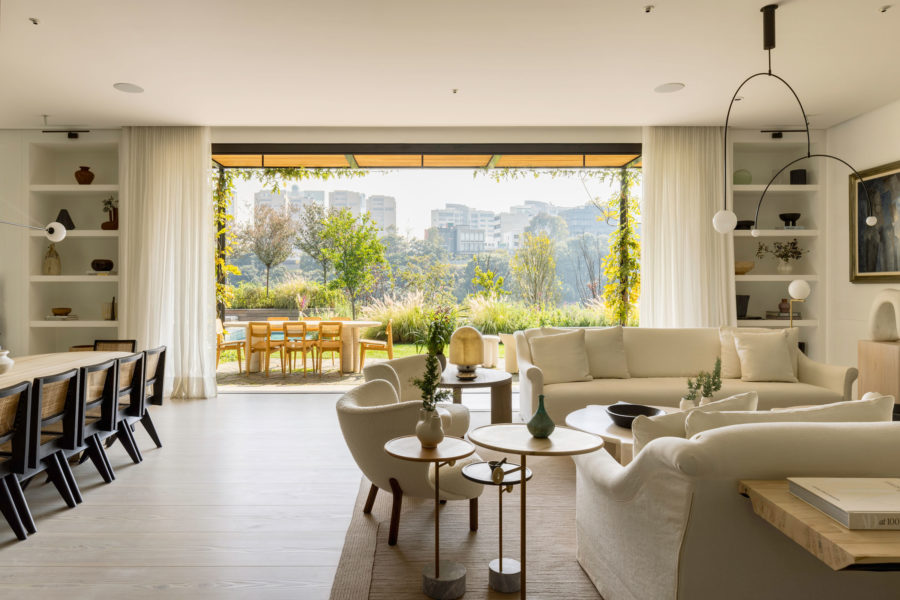
The design of Punta House brings nature into an urban home just west of Mexico City. Photo by Rafael Gamo
The bedrooms are distributed along the floor plan by means of three independent pavilions that are connected by a wide and luminous corridor and that simultaneously rest perpendicular over the volume that houses the public area. Each bedroom volume is a rectangular prism with a gabled roof; the angles are used to reflect and attenuate the light to make it softer. Each structure was built from steel and lined with zinc. The interiors feature oak wood, a materiality that recalls the lush ravine that surrounds the residence. This criterion of the upper level, with oak-lined interiors, is followed throughout the house, while certain rooms are accented with lacquer, nuanced marble, or stucco. The public area consists of a reinforced concrete slab with a brushed concrete finish. The large spans required were produced by means of a ribbed slab.
All the spaces of the house are connected in at least two of their endpoints with the exterior. The scale and proportions of this house are contained by the landscape and the boundaries between inside and outside begin to disappear in every border. All the bedrooms are connected through exterior landscaped terraces. It is possible to walk through the entire house along the outside, through different platforms, paths, and levels that can be walked connected by staircases made of large slabs. The large olive trees in the entrance plaza compel the walk to alter its path. The project respected most of the trees and developed around their original locations.
The vegetation mixes endemic species and the boundaries between wild ravine and domestic garden are blurred; the latter has olive trees, plum trees, guava trees, and lavender. The volumes sprout from the nature that surrounds them. The project also has a refuge for pollinating species, and you’re likely to see butterflies, hummingbirds, and bees.
Below the public area and in the middle of the lateral and frontal wings you’ll find the service area—the last piece of the composition. This space is covered with volcanic stone on the outside, which in turn envelops the foundation that joins the project to the ground.
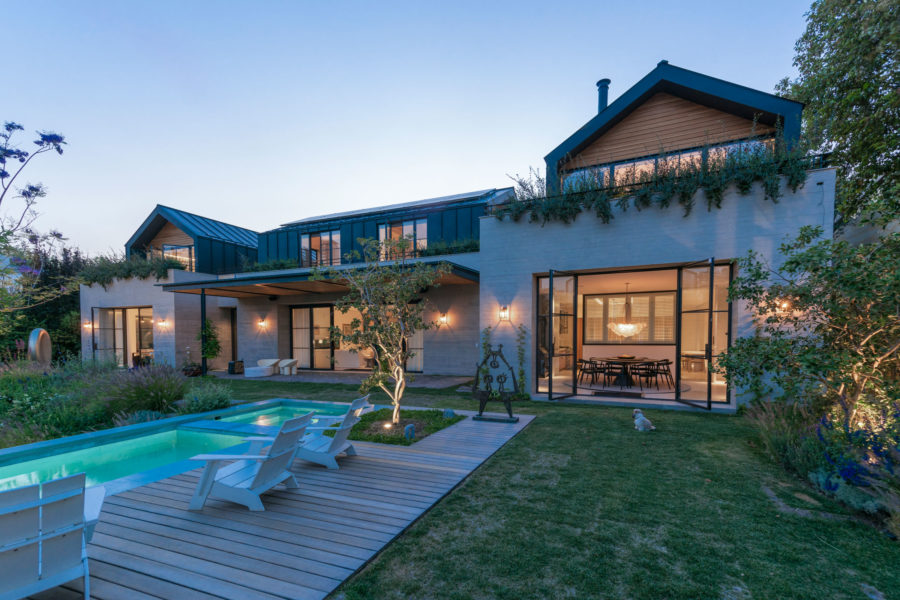
Photo by Jaime Navarro
In order to minimize the carbon footprint and meet its commitment to the planet, a series of passive and active technologies were used in this project. A careful study of sunlight, wind, and orientation allows for cross ventilation in all spaces. Thermal insulation was implemented to minimize heat gain or loss in walls and roofs. In addition, photovoltaic panels are integrated into the zinc roofs and provide a large part of the power consumption.
Punta House is an enclave of comfort close to nature. This urban house shows that greenery and all natural elements can still be preserved within big cities.
Project Credits
Name: Punta House
Location: Mexico City
Completed: January 2021
Size: 14,000 square feet
Architects: ZDA, VGZ Arquitectura
Construction: Quintanilla Arquitectos
Interior Design: Goldberg Interiores
Installations: IBE México, 3P TECHNIC, NTX
Structure: WSP México
Lighting Design: Andrea Sánchez, Santiago Bautista
Landscaping: Pedro Sánchez

